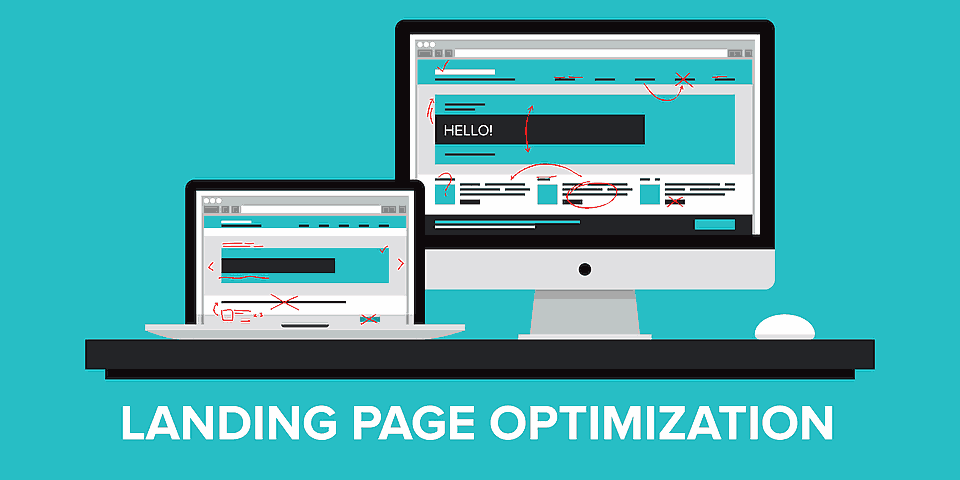What is a Landing Page?
Landing pages are your digital sales representatives, designed to turn your visitors into leads. They function as your front windows, much like a department store, designed to draw visitors in. It is an art to creating a successful landing page, much like decorating your windows. There is a thin line between having a landing page that is too cluttered and one that is too bare. In a study conducted by Hubspot, if a landing page is successful, you will experience a conversion rate of 20%. We will break down the do’s and don’ts of a successful landing page and explain how to implement these tips in order to make your landing pages successful.
DO:
Write a clear and concise action oriented headline:
It is important to be as transparent as possible when it comes to your visitors. Writing a clear and concise action-oriented headline is the best way to communicate everything your visitor needs to know about your offer. Your headline is communicating how your offer will solve your customer’s problem or how they will benefit from this offer. It is also important to state in your headline how your visitor is going to receive their offer and what type of offer it is.
Explain the offer clearly and place visual emphasis on the value:
While it may make sense to use your landing page to provide visitors with a background of your company, such as who you are and what you do, your landing page is not the place to do this. Your landing page is the place where you explain in a clear and concise manner what your offer is and its value to your visitors, hoping to convert them to a lead.
In 1-3 sentences, explain what the offer is and then explain how someone would benefit from that offer. Visitors make up their minds in a matter of seconds, so it’s important that your landing page is not filled with an overabundance of text. Use bullet points, bolding and numbers when possible to break up the text and highlight what’s important. If possible, keep the offer above the fold, meaning your visitors do not have to scroll in order to find the offer.
Remove the navigation menu and links:
The primary goal of your landing page is to generate leads, so get rid of any distractions that may prevent your visitors from completing the process. Make sure your form is a strong focal point on your page, and that the “submit” button is highly visual and easy to click. If things become too complicated or your visitors have to search the page in order to fill out the form to receive the content, they may exit out of the process entirely, causing you to lose them as a lead.
Make sure the form length mirrors the value of the offer:
The time that it takes a visitor to fill out any form to receive an offer, should match the value of the offer. Meaning, a visitor should not have to fill out a 3 stage form for a tip sheet comprised of 6 tips. The higher value an offer has, the more information you can ask for from your visitors. This will help you figure out how much the visitor is willing to share in order to get the offer.
Enable sharing via social media:
If your visitors find the offer that you presented relevant and useful, there is a very high chance that they can think of someone on their friends list that could benefit as well. Placing social media icons on your landing page enables your visitors to share your offer, allowing it and your company to gain exposure.
DON’T:
Eliminate form fields
When trying to come up with a strategy for conversions, most people assume that making the process as simple as possible will help to push visitors through to the next stage in the buyer’s journey. This is wrong. When asked what are the three most important fields people will say: Name, Email and Phone Number. Removing all fields from a form until these are the only ones left is incredibly threatening to a potential lead. If visitors can download the offer to get their questions answered without having to give out their personal information, or giving it out in a non-obvious manner they will take that route every time.
When visitors get the impression that their personal information is required, it makes them nervous for two reasons: they know they won’t get their questions answered and they’re nervous about getting calls from salespeople. Including non-threatening fields like asking for number of employees helps to lower their guard. When you implement multi-step landing pages, you get people to start a commitment they don’t want to bail on, which will help you in the process of converting visitors to leads.
Engage in Small Talk
Most advertisers who use landing pages for lead generation know that there is a great value in getting in touch with a new prospect as fast as possible. This is because leads lose tremendous value five minutes after the conversion happens. A solution to this is to carefully put into place live chats. Instead of attempting to engage your visitor with traditional chat greeters, ask them a question. When asking a question, try to ask ones that can be easily answered.
Change Everything at Once
It’s human nature to want to change everything about a certain approach or campaign if something isn’t producing results. However this is not the best approach when it comes to fixing a landing page. When analyzing your landing page, consider how your visitors and ideal leads are interpreting the offer and how it is presented. Does the language resonate? Is the form too long and asking too many questions? Are you asking the right questions? If you decide that one or more of these aspects are not working, then change them one at a time. You will never know how effective your changes were if you change everything at once. These tiny changes will help you fine tune the impact your landing page has on your visitors.
Now that you have learned the proper practices for creating a successful and engaging landing page, learn how it can help your business. If you are interested in learning how marketing automation can help your business grow, schedule your 30 minute consultation with us today.
References: Dane, Johnathan. "Three PPC Landing Page Tips Hardly Anyone Takes Advantage Of." MarketingProfs. N.p., 20 Apr. 2016. Web. 11 Apr. 2017.




